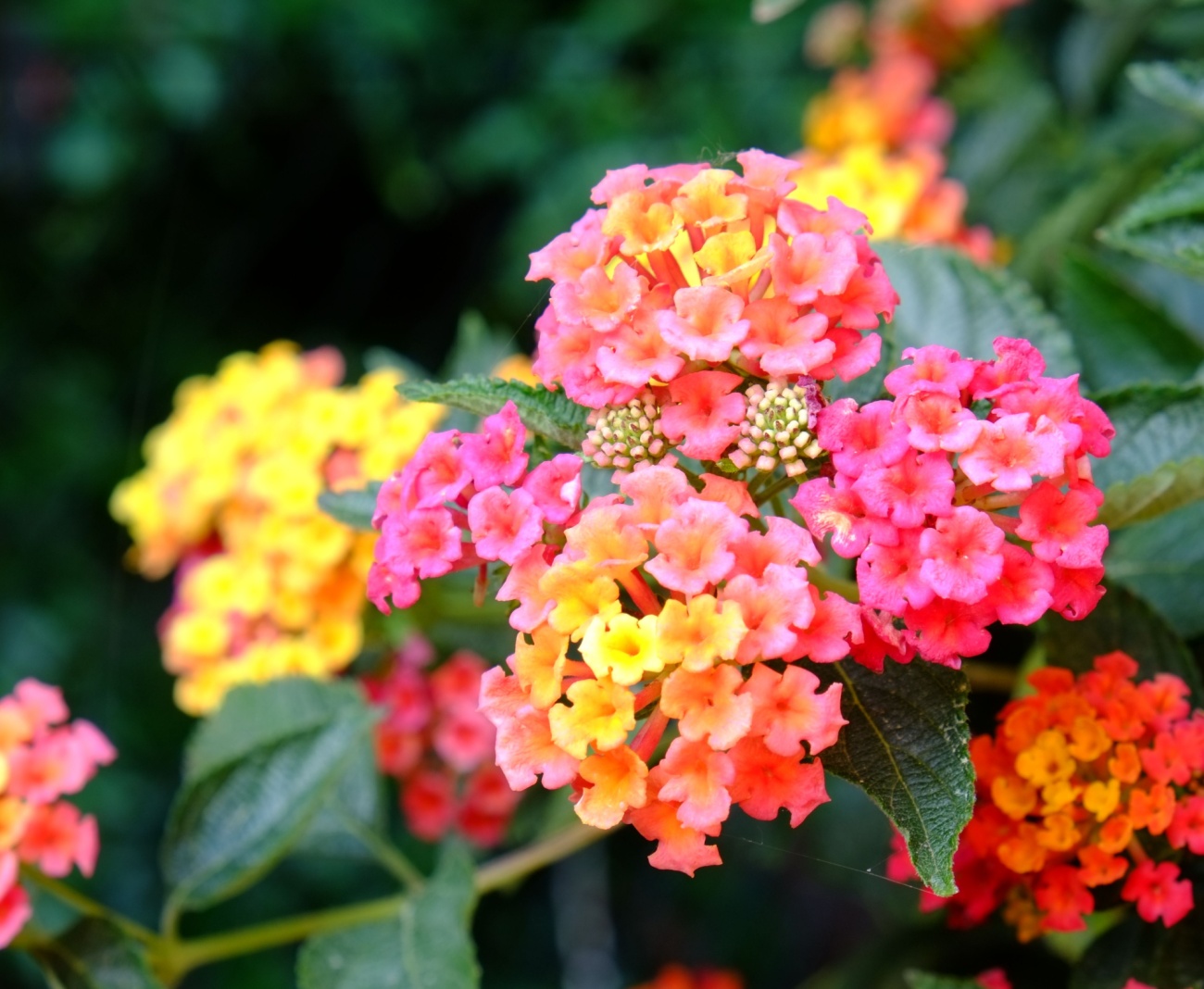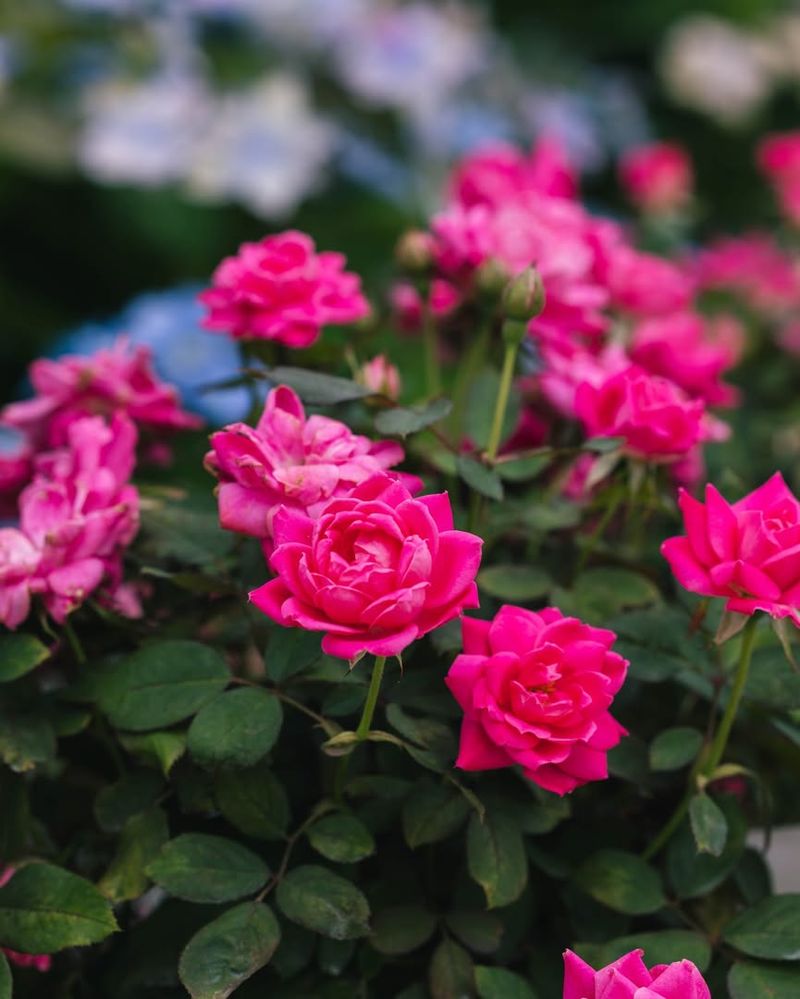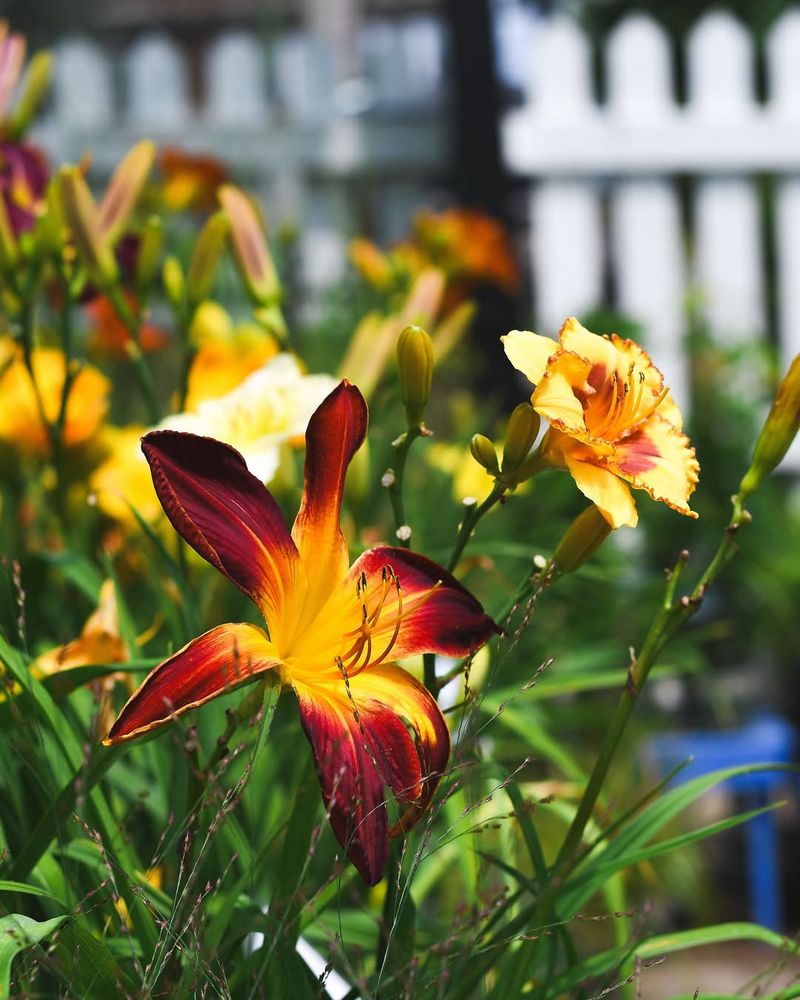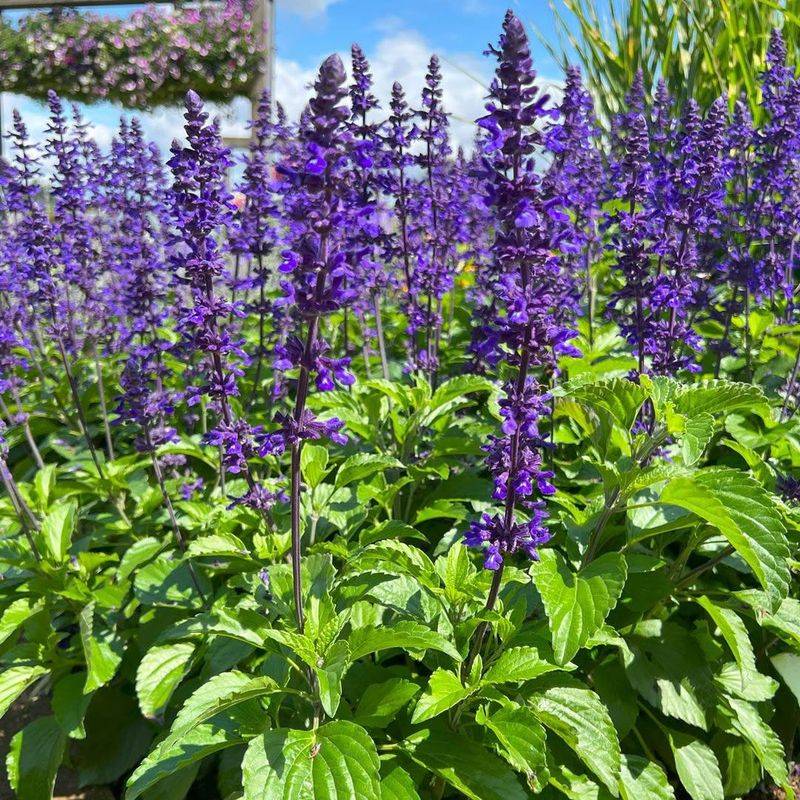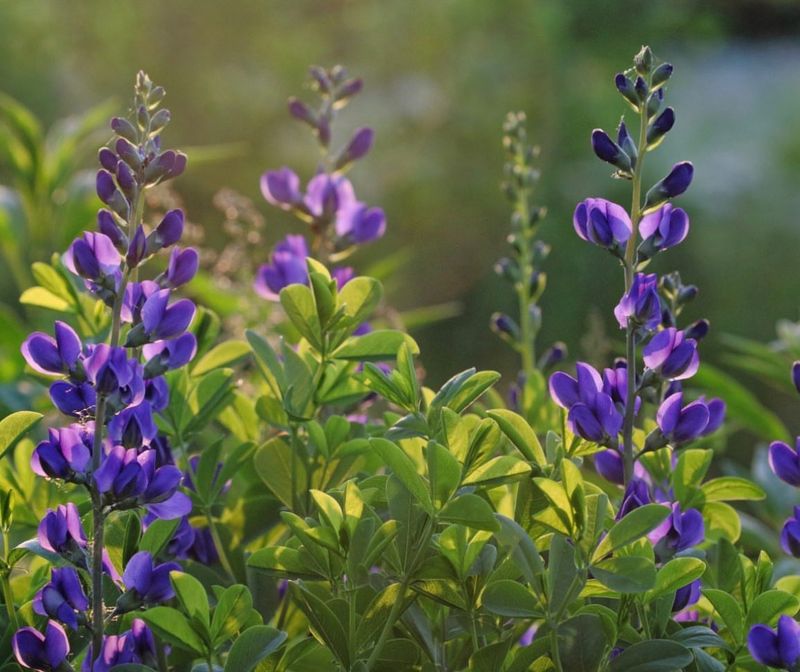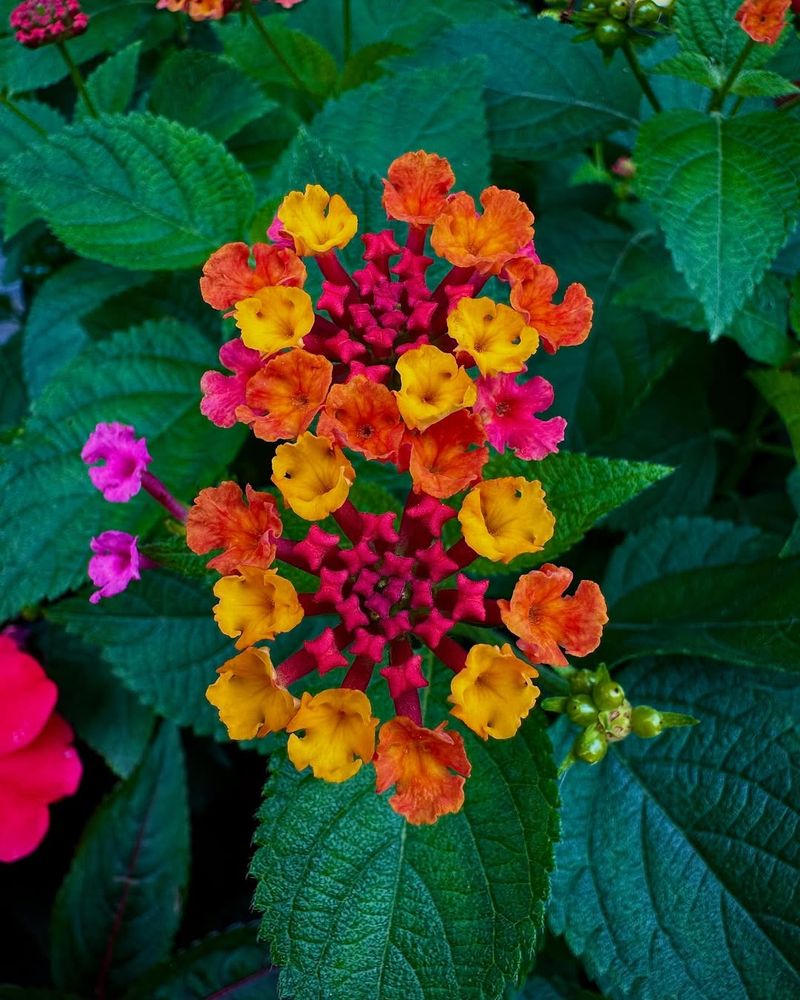Kentucky gardens face unique challenges from humidity and unpredictable weather that can make plants vulnerable to fungal problems and other issues. Choosing flowers that naturally resist these problems saves time, money, and frustration while keeping your garden beautiful all season long.
Smart homeowners across the Bluegrass State are turning to tough, reliable blooms that thrive without constant worry about spots, mildew, or wilting leaves.
1. Black-Eyed Susan
Cheerful yellow petals surrounding a dark center make this native wildflower a Kentucky favorite. Black-Eyed Susans bounce back from summer storms and handle our humid conditions without developing the leaf spots that trouble other flowers.
You’ll find them blooming from June through October, attracting butterflies and bees to your yard. Plant them in full sun with decent drainage, and they’ll reward you with armloads of cut flowers. Once established, they tolerate drought surprisingly well and spread naturally to fill empty spaces in your flower beds.
2. Purple Coneflower
With a raised center cone that birds adore and petals in shades from pink to white, coneflowers stand tall without fussing. Native to our region, they’ve adapted perfectly to Kentucky’s climate swings and rarely show signs of fungal troubles that plague less hardy varieties.
Goldfinches particularly love the seed heads in fall and winter. These perennials grow stronger each year, forming bigger clumps that you can divide and share. Minimal watering needed once roots settle in, making them budget-friendly beauties for any sunny spot.
3. Knock Out Rose
Bred specifically to resist black spot and powdery mildew, Knock Out roses changed the game for Kentucky gardeners who love roses but hate spraying chemicals. Blooms appear continuously from spring until frost in colors ranging from red to pink, coral, and sunny yellow.
Unlike old-fashioned roses, these modern shrubs require no deadheading to keep flowering. They handle our muggy summers beautifully while maintaining glossy, healthy leaves. Perfect for beginners or busy homeowners wanting gorgeous color without the traditional rose maintenance headaches.
4. Daylily
Tough as nails yet elegant, daylilies offer thousands of color combinations from creamy whites to deep burgundies. Each bloom lasts just one day, but plants produce so many buds that you’ll enjoy weeks of continuous color without any special care.
Kentucky’s clay soil doesn’t faze them, and they laugh at humidity that would flatten weaker plants. Deer usually leave them alone, which solves another common garden problem. Clumps multiply over time, giving you extras to transplant elsewhere or share with neighbors who admire your garden.
5. Salvia
Hummingbirds zoom straight to salvia’s tubular flowers, which rise on spikes above aromatic foliage that resists most pests and problems. Varieties like ‘May Night’ and ‘Caradonna’ perform beautifully in Kentucky, blooming repeatedly if you trim off spent flower stalks.
The slightly fuzzy leaves shed water quickly, preventing the dampness that encourages fungal growth on other plants. Available in blues, purples, reds, and pinks, salvias add vertical interest to flower beds. They prefer well-drained spots but adapt to various soil types across the state.
6. Sedum
Fleshy, water-storing leaves give sedums an advantage in Kentucky’s occasional dry spells while making them unappealing to most plant problems. Varieties like ‘Autumn Joy’ develop from spring greens to stunning fall flower heads that age beautifully even into winter.
Butterflies and beneficial insects flock to the nectar-rich blooms in late summer. Ground-hugging types work wonderfully between stepping stones or spilling over retaining walls. Tall types create structure in borders. Both kinds laugh at neglect, making them ideal for weekend gardeners or vacation-prone families.
7. Baptisia
Also called false indigo, baptisia develops deep roots that tap into moisture other plants can’t reach while forming bushy mounds of blue-green leaves that stay clean all season. Spikes of blue, yellow, or white flowers appear in late spring, followed by interesting seed pods that rattle in the breeze.
Kentucky’s native variety thrives without any pampering whatsoever. Deer walk right past them, and insects rarely bother the tough foliage. Give them room to spread, as mature plants can reach three feet across and become long-lived garden anchors.
8. Lantana
Clusters of tiny flowers in sunset colors bloom non-stop through Kentucky’s hottest, most humid months when other plants struggle. Butterflies adore lantana, often covering entire plants during peak bloom times in July and August. Heat and humidity actually help lantana thrive rather than causing problems.
The slightly rough leaves resist most insects and fungal issues completely. Though treated as annuals in Kentucky, they’re incredibly affordable and provide massive color impact. Trailing varieties work beautifully in containers and hanging baskets for porches and patios.

